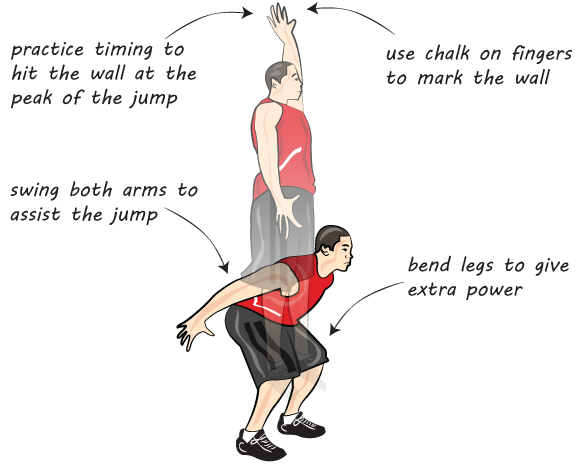Home Fitness Tests
Leg Power
Leg power is important for any sport which requires sprinting or jumping. This test is designed to measure your explosive leg lower. This is one of the 10 tests included in the Home Fitness Test Manual. See the list of other Fitness Tests you can do at home.
![]()
Equipment Needed (see more about equipment)
- Wall – a high enough wall to jump against and a clear space around it.
- Cloth Tape – measuring tape like used for sewing, for measuring the reach and jump height.
![]()
Vertical Jump Test
Find a high wall, such as the outside of a building, which has a bit of room around the base so you can jump and land safely.
Start by standing side on to the wall and reach up as high as you can with the hand closest to the wall. Make note of how high you can reach. This is called the ‘standing reach height’. Then stand a little away from the wall, and jump as high as possible using both arms and legs to assist in projecting the body upwards. Attempt to touch the wall at the highest point of the jump. Make note of where you touched the wall at the maximum height of the jump.
You can assist in recording your score by holding a piece of chalk in your hand and using it to mark the wall. If the wall already has horizontal lines, such as a brick wall, it will be easier to note your jump height. Have as many attempts as you need to get the best possible score. Practice your technique, as the jump height can be affected by how much you bend your knees before jumping, and the effective use of the arms. You also need to hit the wall at the peak of the jump, which can take some practice.

Results
Calculate your vertical jump score by subtracting your reach height from your jump height
Vertical Jump = Jump Height - Reach Height
The higher the score, the better your leg power. Leg power can be improved by increasing leg strength and with plyometric (bounding) exercises and sprint training.




